Project Description
Électro-encéphalogramme
Description fonctionnelle
Ce modèle d’EEG est conçu pour capter principalement les ondes alpha et bêta qui correspondent respectivement à un état détendu (mais éveillé) et concentré. Cette discrimination permet donc de construire un programme dont le comportement pourra être altéré dépendamment duquel de ces deux états semble dominer le porteur de l’EEG. Cette simple distinction ouvre la porte à un éventail d’applications allant du jeu de « Pong » contrôlé par l’esprit proposé par le concepteur original du EEG jusqu’à un programme pour entraîner l’usager à maitriser son niveau de concentration/détente.
État du projet
Le projet est toujours en phase de développement, mais des tests ont étés effectués avec succès sur la version préliminaire du projet fait sur une plaque de prototypage. Le circuit imprimé à été fabriqué avec la CNC (après plusieurs tests) et les composantes y ont été soudées. Le circuit imprimé éprouve toutefois des difficultés à reproduire les résultats positifs des tests antécédents. Le projet est donc en phase de diagnostique de problèmes pour le moment. Une fois le problème réglé, il restera à trouver ou écrire un programme qui pourra lire, sauvegarder et afficher les données fournies par le circuit.
Mise à jour: Le problème à été réglé avec succès, il reste maintenant à développer le côté logiciel du projet.
Pour une documentation plus complète et technique, visiter la page du projet sur le wiki d’échoFab.
Le projet a été réalisé par Yoann Ochietti dans le cadre de son stage en animation.
Remerciments à Roby Provost et Raphaël Demers pour technique en matìère d’électronique ainsi qu’à Yann Aublet Longpré et Tais Grote pour la lancée initiale du projet.
Démonstration
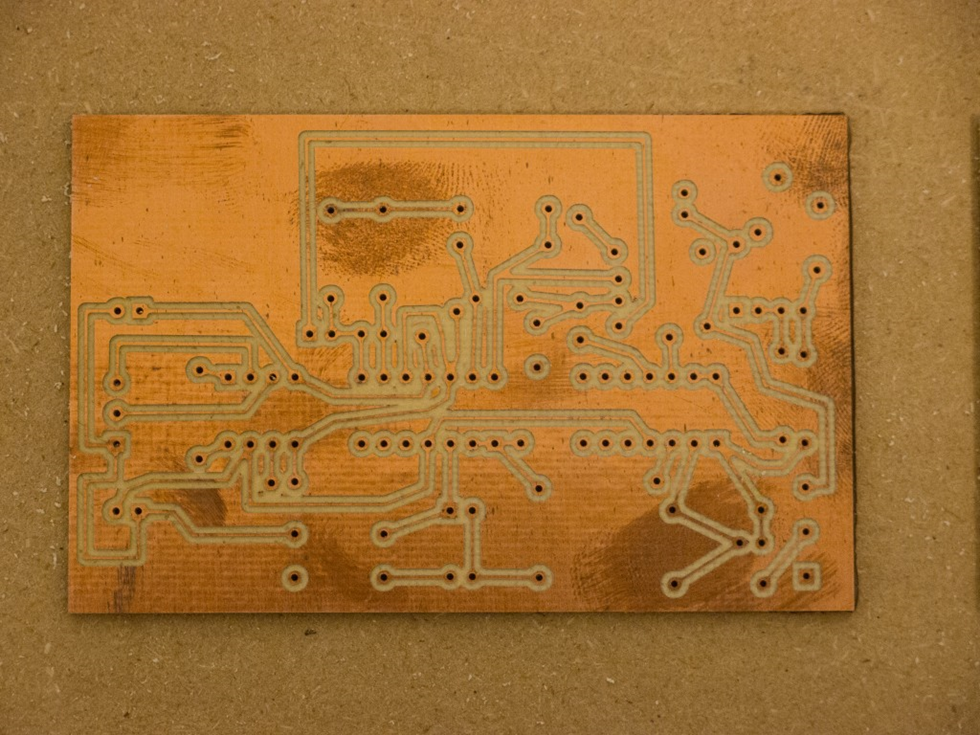
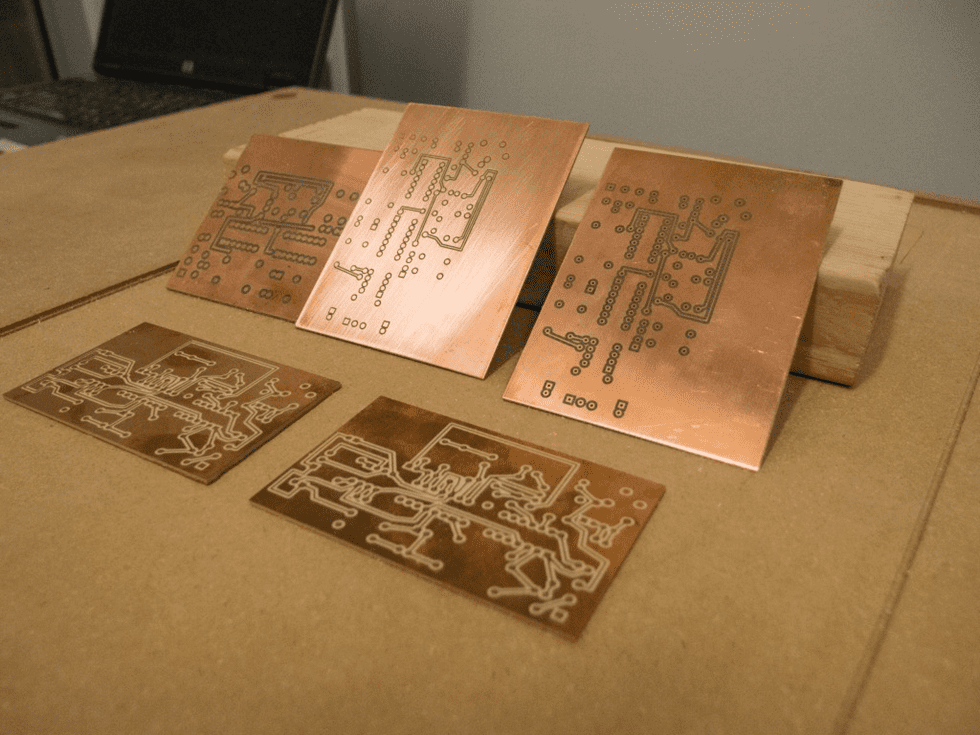
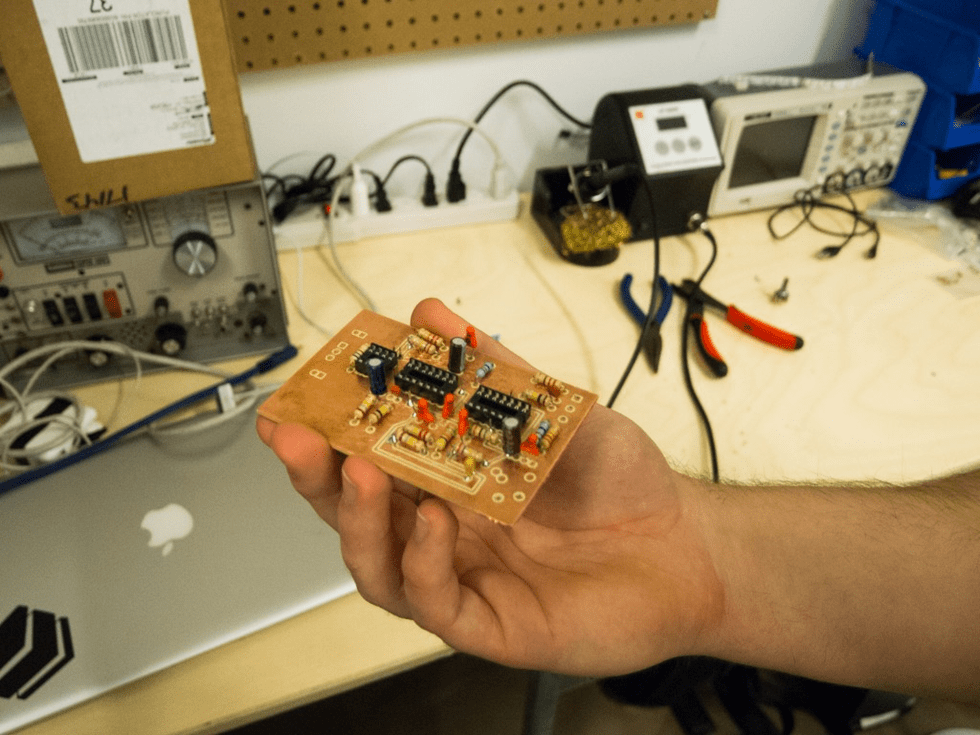
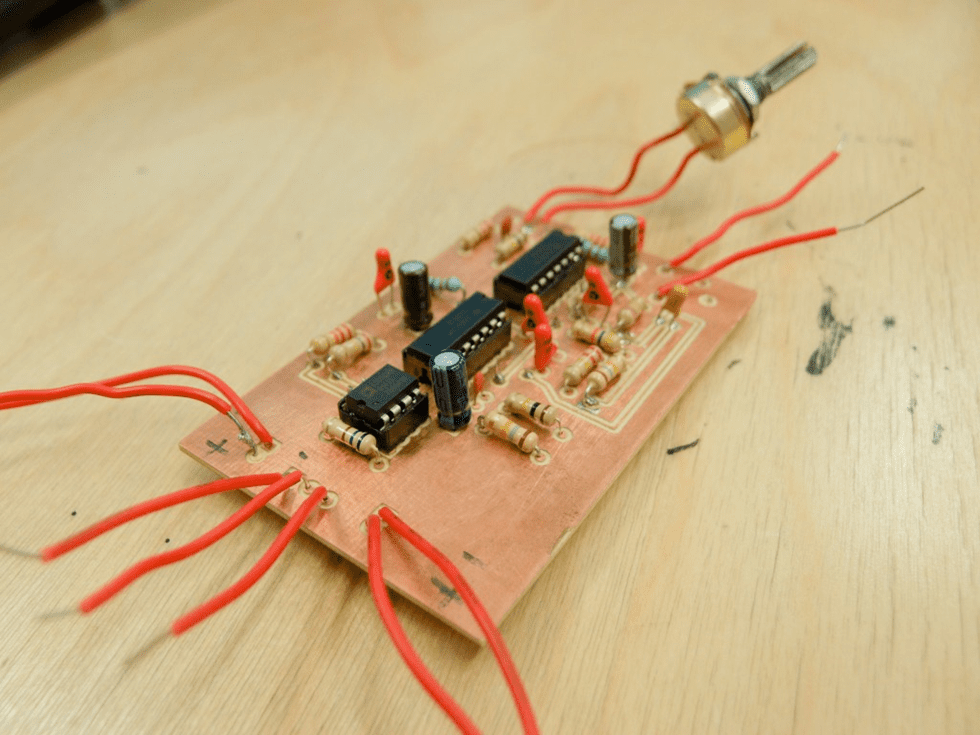
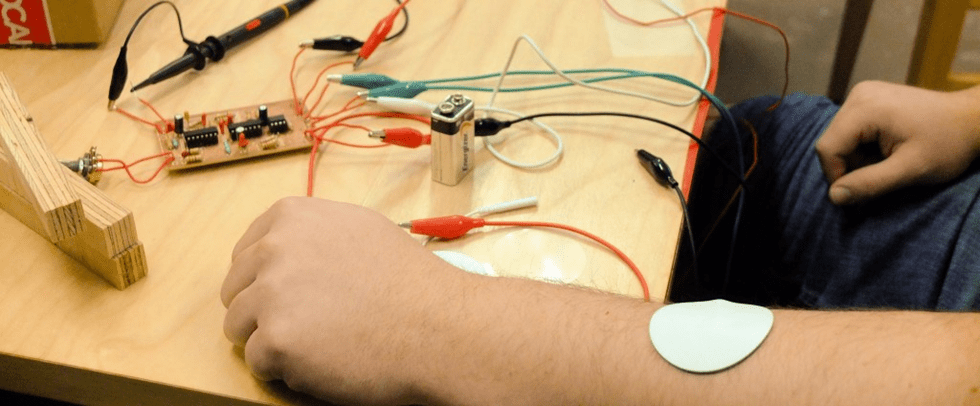
Origines
Un électro-encéphalogramme permet de mesurer l’activité électrique dans le cerveau au moyen d’électrodes posées sur la tête. Plusieurs versions de cet outil destinées au grand public émergent présentement sur le marché, notamment stimulés par les potentiels d’applications en rétro-contrôle biologique (« biofeedback ») et comme interface pour contrôler un ordinateur.
Alors que les versions commerciales d’EEG coûtent souvent plusieurs centaines de dollars (Emotiv), plusieurs initiatives ont été lancées pour rendre cette technologie accessible à l’amateur doté d’un peu de motivation et d’une cinquantaine de dollars. Il suffit donc de suivre les plans offerts par l’un de ces projets pour arriver à construire sa propre instance d’un EEG pour ensuite l’appliquer comme bon nous semble. Pour le projet actuel, les instructions proposées par un utilisateur du site web Instructables ont servies à produire une version en circuit imprimé d’un EEG à partir d’un peu de matériel électronique de base (résistances, condensateurs, amplificateurs), de logiciels « open source » (Fritzing, Inkscape) et de la CNC d’échoFab.
